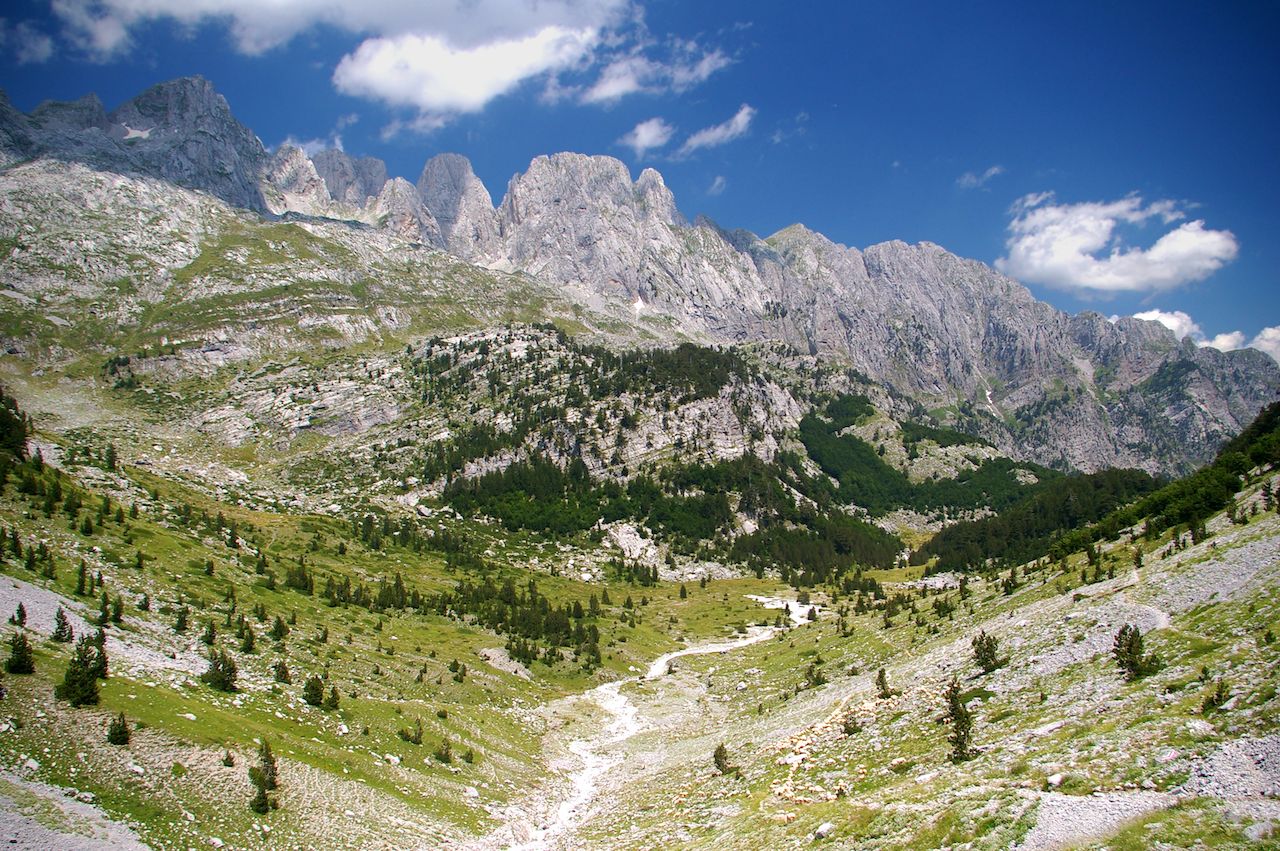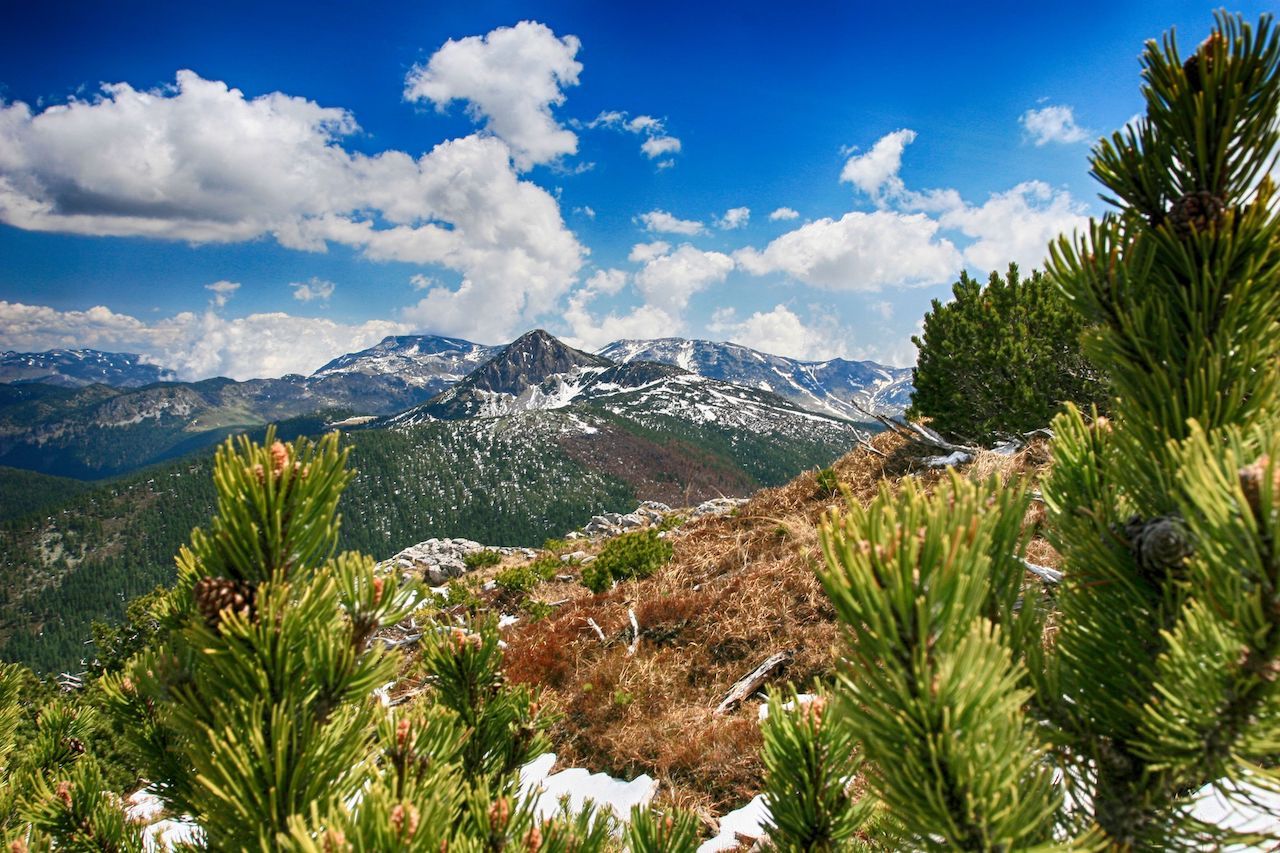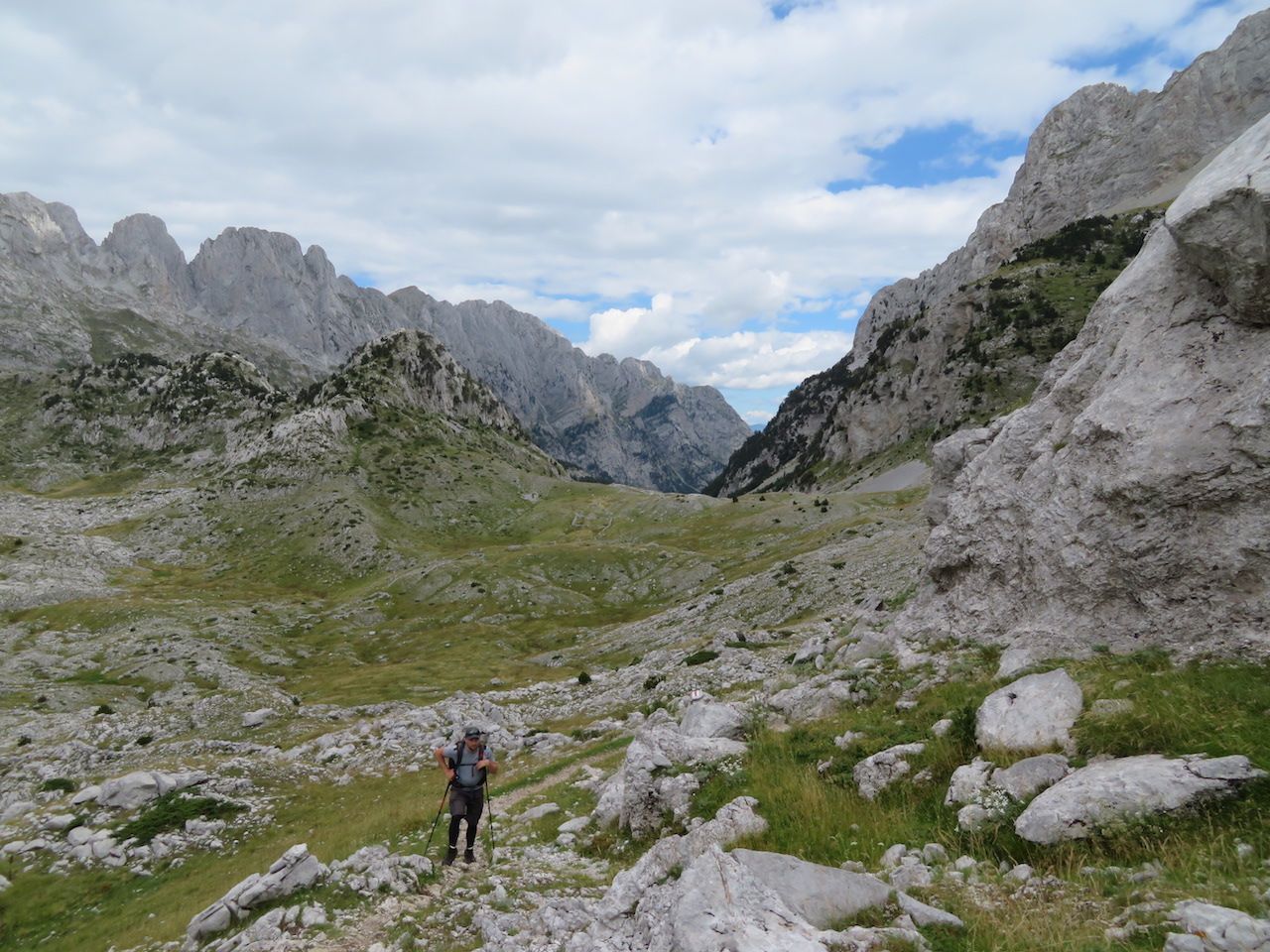Standing at the summit of Mount Taljanka in Kosovo, your thighs will burn and the wind may feel strong enough to knock you off your feet. You’ll look out on the valley below to see no roads or towns, only a green pasture encircled by layers of mountains reaching back to the horizon. It will feel as though you’ve stumbled on some secret land, hidden in Europe’s southeast corner. But there’s a moment like that every day on the Peaks of the Balkans trail.
Peaks of the Balkans makes a 119-mile loop intersecting the borders of Albania, Montenegro, and Kosovo. The path snakes through the Dinaric Alps, or “Accursed Mountains,” and crosses some of the most pristine wilderness left in Europe. Throughout the journey, trekkers stay at family run guesthouses, making the trail as much a cultural experience as an outdoor adventure. This combination, and a re-discovery of the Balkans among travelers, is likely to soon make the Peaks of the Balkans, or POB, a fixture of European hiking trails. Here are five reasons why you should hike Peaks of the Balkans now.





